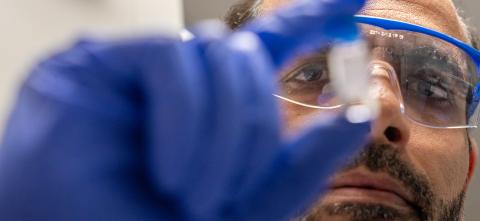
Politics Shape What Brazilians See on TV About Energy Shortages
A new study led by Karina Ninni Ramos of the Center for Global Change and Earth Observations, reveals that relationships between presidents and the press strongly influence how the country’s biggest broadcasters cover energy shortages, blackouts, and rationing.

Decoding the Second Brain
Trust your gut is more than an expression. The gut’s ability to influence our wellbeing is rooted in the enteric nervous system. This complex network of neurons and glial cells that lines the gut is often called the “second brain.”

Sweet Targets: The Quest for an Improved Whooping Cough Vaccine
With cases on the rise, researchers are aiming to develop a “one-two punch” vaccine strategy against pertussis, more commonly known as whooping cough. This work could ultimately help reduce transmission of the disease and combat the threat of resistant bacteria mutating into stronger, more lethal “superbugs.”

Scientists Solve Long-Standing Mystery of Amino Acid Transport in Plants
The team’s new study, published in Nature Plants, identifies a class of previously unknown transport proteins called RETICULATA1 (RE1), which enable the exchange of key amino acids within plant cells.

“Waking Dream” Builds on Napoleon’s MSU Jazz Guitar Foundation
Jazz guitarist Randy Napoleon’s latest release, Waking Dream: The Music of Gregg Hill and Randy Napoleon (OA2 Records), is more than an album—it’s a testament to mentorship, collaboration, and the vibrant jazz community cultivated at MSU.

Brathwaite Explores Nationalism’s Role in Combat Motivation
JMC Associate Professor Kirstin J.H. Brathwaite’s new book, Symbols and Sacrifice in War, challenges conventional wisdom about military motivation. She argues that soldiers’ commitment to battle depends not just on training or unit bonds, but on whether the war’s goals align with their deepest beliefs about national identity.

Faculty and Students Showcased in New Album
When the Michigan State University Wind Symphony took the stage at the Wharton Center on March 20, 2025, it wasn’t just another performance—it was the beginning of a recording that would become a testament to the College of Music’s commitment to excellence, collaboration, and student opportunity.

On a Florida Bombing Range, Endangered Woodpeckers Get a Second Chance
Florida’s Avon Park Air Force Range is teeming with life. Over 40 at-risk species occupy the 106,000-acre expanse used by the military for training exercises — including bombardments. But Spartan scientists are using the range to test something other than weapons: innovative strategies to save threatened species.
Announcements
